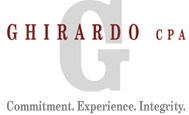Now's the Time for Estate Planning
Work hard, invest wisely and make prudent, educated decisions. These concepts have never been more important. With the current state of the economy, developing and implementing an estate plan that is right for you should be high on your priority list. Because asset values and interest rates are still at record lows, now is a great time to make estate planning decisions that will allow greater wealth to be passed to heirs.
The Gift Tax and How to Avoid It
The federal gift tax exists for one reason: to prevent taxpayers from avoiding the federal estate tax by giving away their money before they die. So while you can’t avoid estate taxes by giving your wealth away, there are certain estate planning advantages that can be realized through gifting.
Medical or tuition expenses are exempt from gift tax liability and do not count toward the annual exclusion amount. This is important because annual exclusion gifting allows you to transfer funds, gift tax-free, reducing your estate tax. Undervalued stocks are a great example of how to use gifting to your advantage during a recession. By transferring stock that today has a low value, but which you anticipate will recover in the future, you will not only avoid transfer taxes but will avoid paying gains on the stocks themselves.
Personal Loans Can be a Win-Win Option
Over the past several years, personal loans have become an increasingly more popular estate-planning strategy. The IRS sets minimum interest rates for personal loans, far below bank rates and depending on the maturity date. This is advantageous to the lender, as the smaller payments will decrease the amount of money being returned to the estate. When used in conjunction with the annual gift exclusion, gifts of the loan’s principal are made yearly by forgiving the amount due and thus maximizing the transfer of wealth and minimizing the estate tax. Be sure to properly document a personal loan to realize the intended benefits.
Grantor-Retained Annuity Trusts (“GRATs”)
A grantor retained annuity trust (GRAT), is a financial instrument commonly used to make large financial gifts to family members without paying a gift tax. This is advantageous in a down economy because if planned correctly, the appreciating asset can be transferred tax-free. When the GRAT is first set up, a “gift value” of the GRAT is calculated. The gift value is set equal to the initial contribution to the GRAT plus a theoretical interest earned on the principal minus the annuity payments that would be made through the end of the term. Thus at the end of the term, the value remaining in the GRAT may still be large, even though the initial IRS calculation suggests that it should have been zero. This remaining value is then passed on to the beneficiary without incurring a gift tax.
Charitable Lead Annuity Trust (”CLAT”)
A charitable lead annuity trust (CLAT) is a customized and independently managed trust that enables a donor to give a fixed annual amount to charity for either a specified amount of time or the life of one or more individuals. Once the term has concluded, the trust terminates and its remaining assets are distributed back to the donor or to one or more beneficiaries. CLATs are advantageous in a recession because the asset is kept in the donor’s name, provides income to the charitable organization and allows the beneficiary to keep the asset. The lower interest rates utilized in a CLAT result in a larger gift or estate tax deduction going to the charity and a smaller value for any gift of the remainder interest going to the beneficiary.
Act Now!
Ghirardo CPA’s estate planning consultants understand the importance of ensuring long-term financial security for your family and can help you structure a plan that takes advantage of these estate-planning tools. Click here to read more about our estate planning services.
 "Ghirardo CPA has made a world of difference in both my business and personal life. They have provided me the tools to work smarter, and plan smarter. The yearly tax planning meetings are productive and organized. I have been a dentist for about 17 years, and a sole proprietor for the last 14. It's within these last three years of meeting Jerry and the Ghirardo team that I feel more in control of my future."
"Ghirardo CPA has made a world of difference in both my business and personal life. They have provided me the tools to work smarter, and plan smarter. The yearly tax planning meetings are productive and organized. I have been a dentist for about 17 years, and a sole proprietor for the last 14. It's within these last three years of meeting Jerry and the Ghirardo team that I feel more in control of my future."



